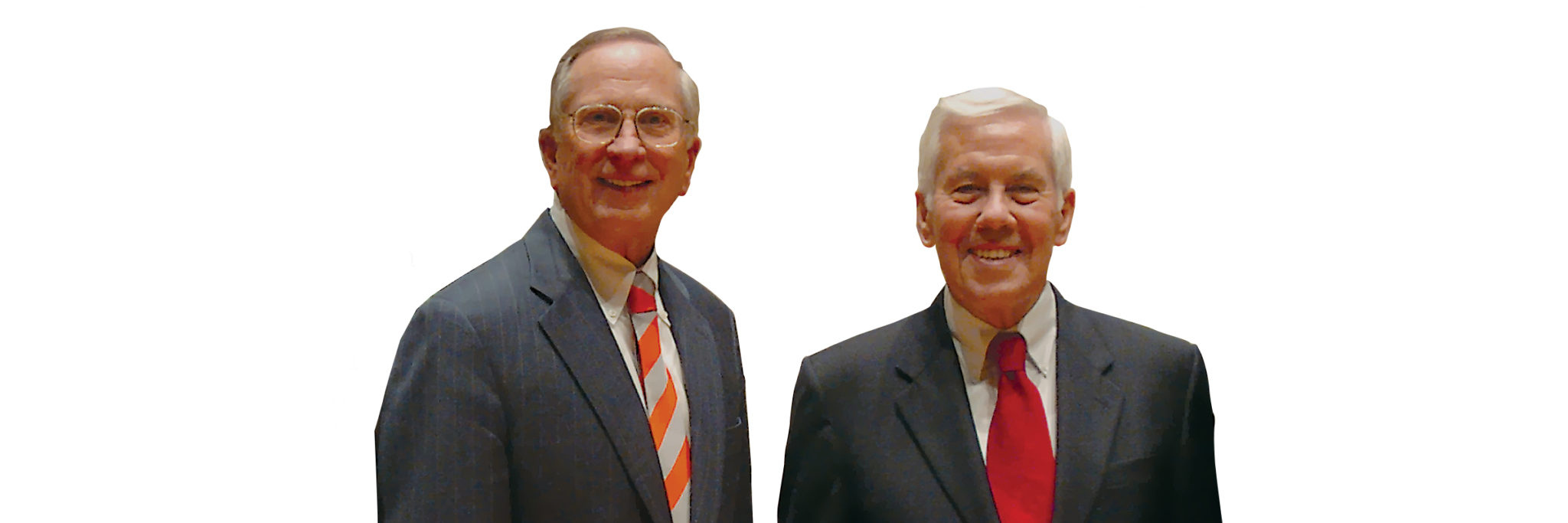It’s no secret that the greatest threats to life on Earth today come at the hands of humankind. Of these, few have the potential for more ferocious devastation than nuclear, chemical, and biological weapons. Despite the decades of fear endured through the Cold War, perhaps the threats were never greater than right after the collapse of the Soviet Union in the early 1990s, when the world quickly realized that a vast arsenal of weapons of mass destruction might be readily available to terrorists and rogue states.
But the threats have been largely averted thanks to Denison Trustee and Republican Senator Richard Lugar ’54 of Indiana and his friend and former colleague from across the aisle, the retired Senator Sam Nunn of Georgia. In 1991, they joined forces behind the Nunn-Lugar Cooperative Threat Reduction Act, which provided assistance to Russia and the former Soviet republics for securing and destroying their excess weapons of mass destruction. Together they have traveled to all corners of the former Soviet Union, working with diplomats and heads of state, and inspecting facilities where weapons were once made and are now being destroyed thanks to their work.
Both men visited Denison last semester as the college inaugurated the Class of 1954 Richard G. Lugar Professorship in Public Policy, which was endowed by Lugar’s classmates on the occasion of their 50th reunion and other generous friends. Nunn, who today serves as co-chairman and CEO of the Nuclear Threat Initiative, delivered the inaugural address. In the spirit of academic pursuit, he tested the audience on Lugar’s career and invaluable achievements, as well as the ongoing threat of WMDs. We can’t present Nunn’s quiz in its entirety, but we can share a crib sheet of the answers.
1 Dick Lugar’s most important election was in 1953, when he was voted Denison student body co-president alongside Charlene Smeltzer ’54. The partnership soon turned into a romance, and then—with their marriage in 1956—a lifelong, unbreakable friendship.
2 It took more than three months of almost non-stop work for Lugar and Nunn to get the necessary Congressional support to pass the Cooperative Threat Reduction Act. Until then, any measure to “support communists”—even in the name of U.S. security—was unthinkable. On this, Nunn remarked, “Since then, as they say in football, it has been three yards and a cloud of dust—not 40-yard touchdowns. We’re still grinding it out every day.”
3 When tensions rose between Russia and Ukraine over the former’s weapons located within the latter’s borders, Nunn and Lugar played a key role in preventing disaster. In fact, it was Lugar’s hopeful, albeit unauthorized, offering of U.S. assistance that in?uenced the Ukrainian government to concede.
4 Since the passing of the Cooperative Threat Reduction Act, the U.S., Russia, and former Soviet republics have deactivated or destroyed 6,670 nuclear warheads as well as hundreds of missiles, launchers, bombers, submarines, and test tunnels.
5 Ten percent of U.S. electricity comes from the 500 tons of highly enriched uranium once loaded in Soviet warheads that were aimed at the United States. The converted material actually amounts to one-half of all fuel used by U.S. nuclear power plants.
6 Through the Nunn-Lugar program, the U.S. is paying to build a chemical weapons destruction facility that will help Russia eliminate nearly two million chemical weapons stored in a dilapidated facility in southern Russia.

